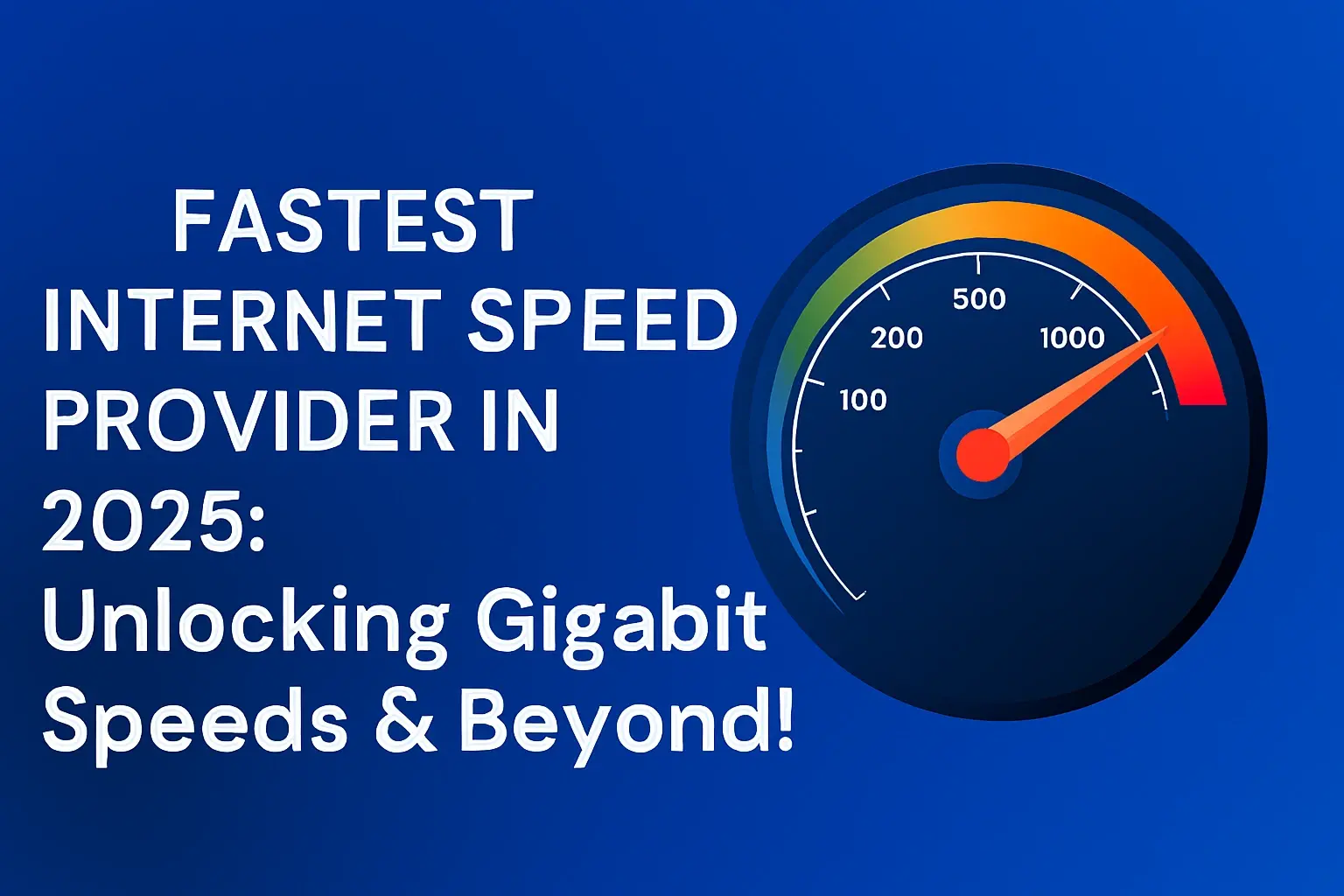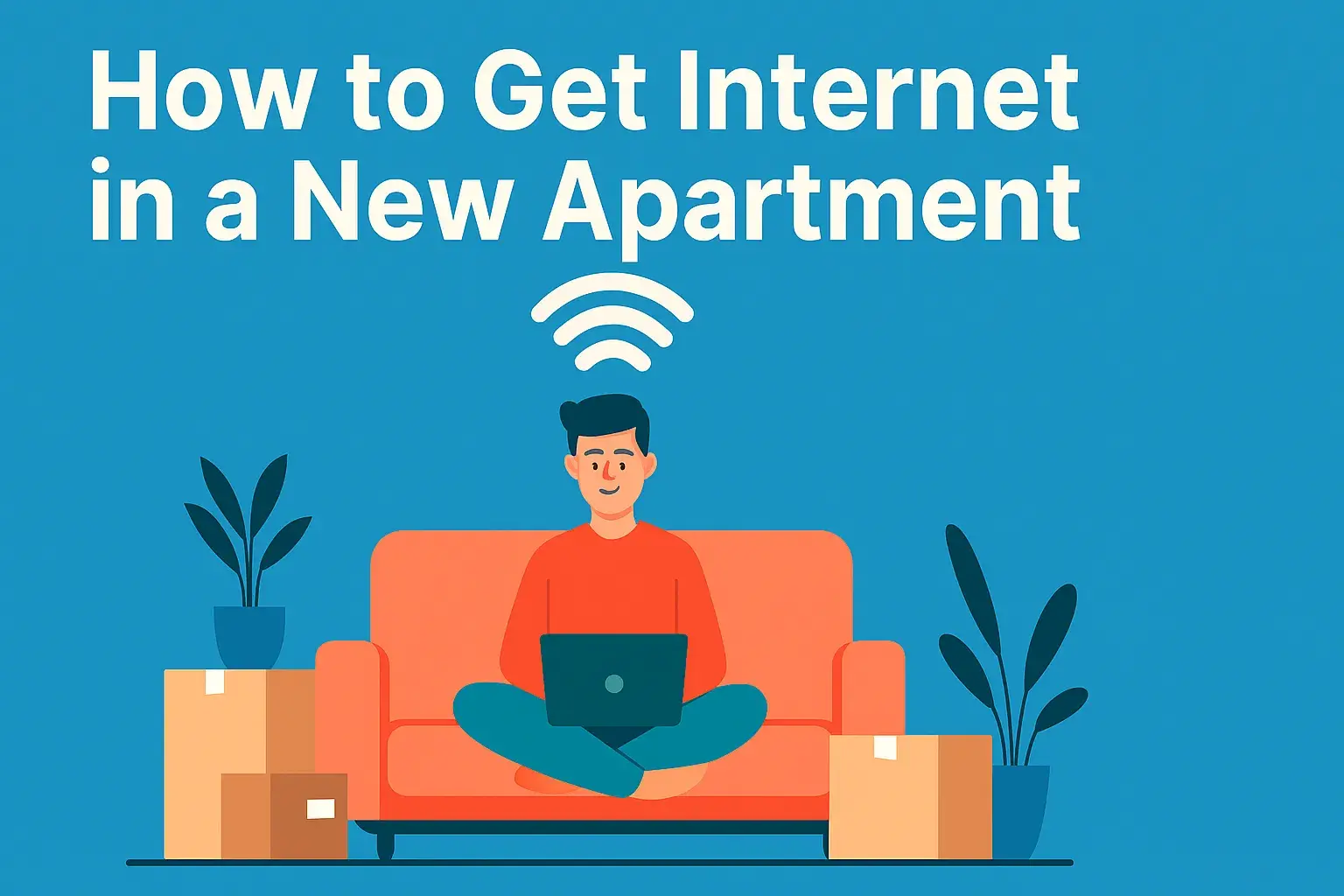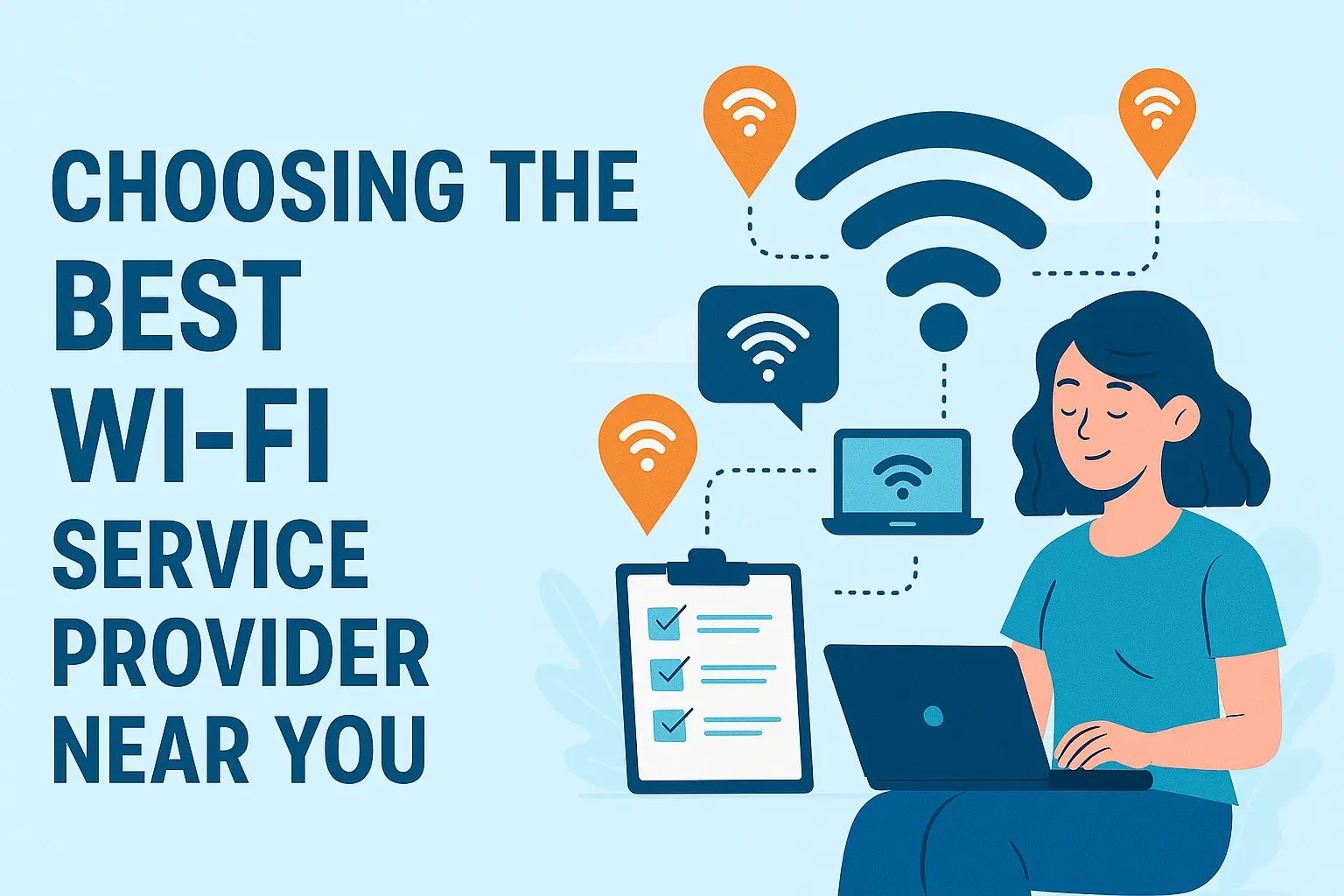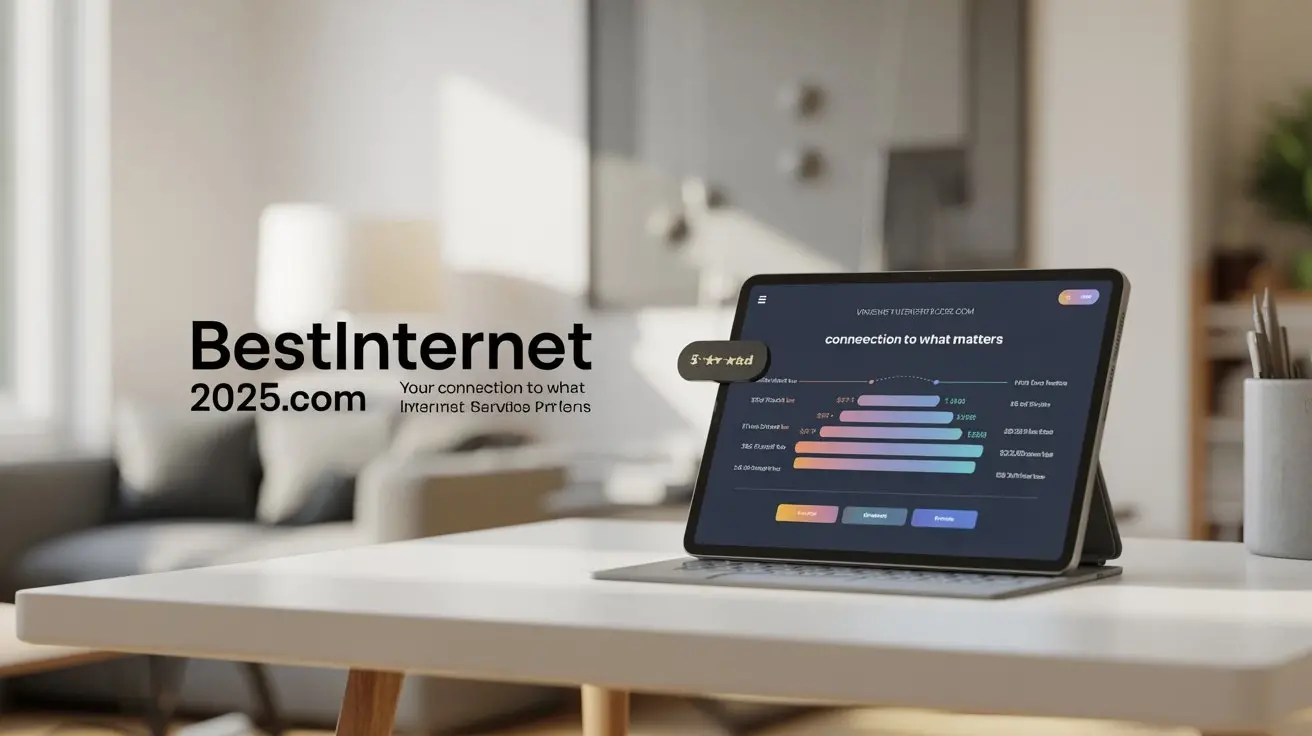Find Internet Provider Search by Address: Your Ultimate 2025 Guide
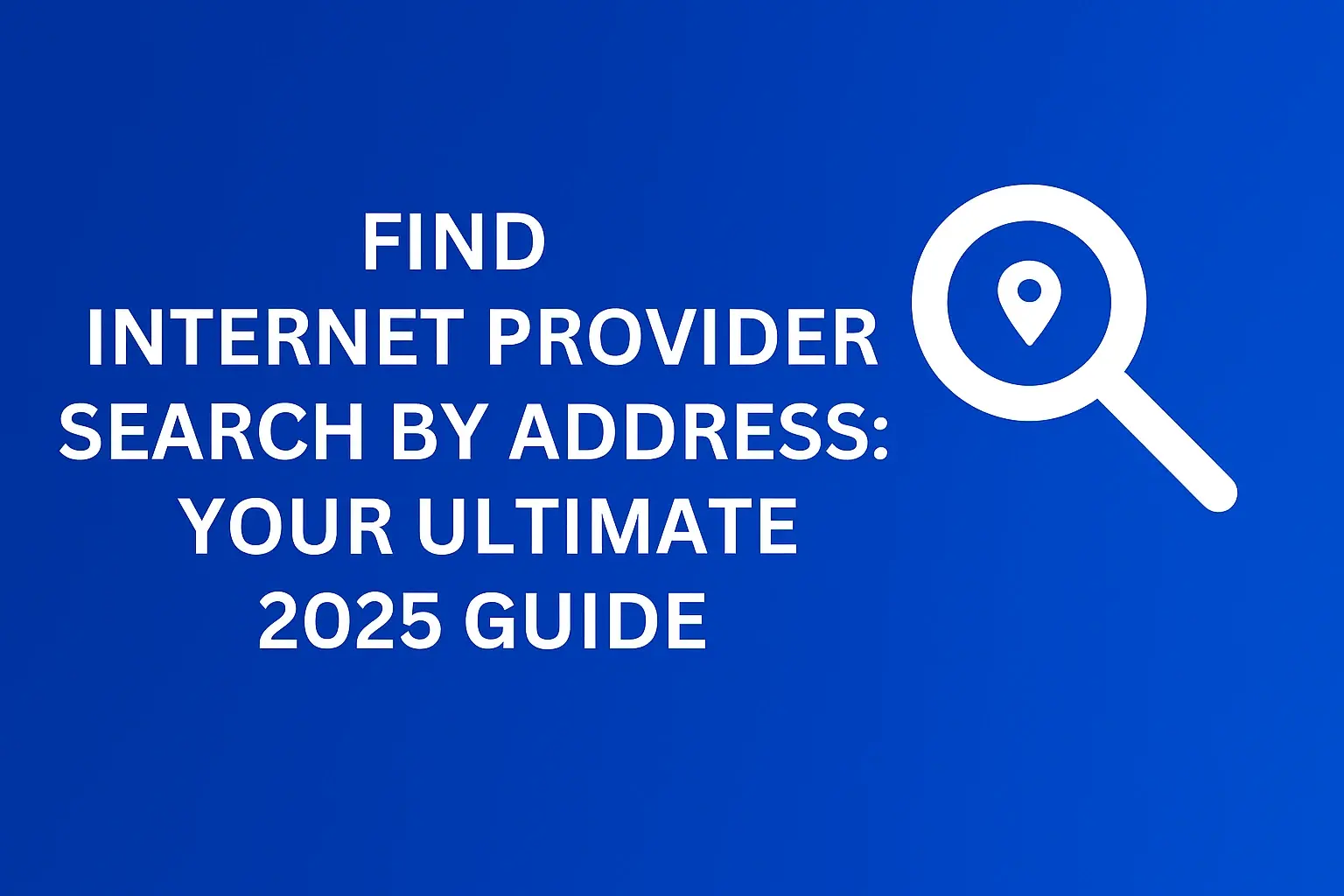
Discover the fastest and most affordable internet providers in your area! Our comprehensive guide helps you search by address, compare plans, and get the best deals in 2025. Stop guessing, start connecting!
Table of Contents
Tired of slow speeds, buffering videos, and surprise charges on your internet bill? Finding the right internet provider can feel like navigating a maze, especially when you don't know what's available at your specific location. Fortunately, the power to find the best internet service is at your fingertips. This comprehensive guide will walk you through everything you need to know to effectively search for internet providers by address in 2025, ensuring you get the speed, reliability, and value you deserve.
Whether you're moving to a new home, upgrading your current service, or simply curious about what else is out there, knowing how to pinpoint available options based on your address is crucial. We'll cover the most effective search methods, what factors to consider when comparing providers, and how to avoid common pitfalls that can leave you with a subpar connection.
Effortless Internet Provider Search by Address: Your Step-by-Step 2025 Roadmap
The most direct and effective way to find internet providers is by using your physical address. This method ensures you're only looking at services that can actually be delivered to your doorstep. Here's how to do it:
Gather Your Information: Have your full street address, including city, state, and zip code, ready.
Utilize Online Comparison Tools: Numerous reputable websites specialize in aggregating internet provider information. These tools allow you to input your address and instantly see a list of available providers, their plans, speeds, and pricing. Look for tools that are frequently updated for 2025 data.
Key Benefit: These platforms often have direct partnerships with providers, offering exclusive deals and up-to-date plan details.
Visit Provider Websites Directly: Once you have a shortlist from comparison tools, visit the websites of major providers (e.g., Xfinity, Spectrum, AT&T, Verizon Fios, CenturyLink, T-Mobile Home Internet, Starlink). Most have an address checker tool on their homepage.
Actionable Tip: Be sure to check both national providers and any local or regional ISPs that might serve your area, as they can sometimes offer competitive pricing or unique services.
Contact Local Retail Stores: For some providers, visiting a local store can provide personalized assistance and insights into local availability, especially for newer technologies like 5G home internet.
Check with Your Landlord or HOA: If you're in a managed property or community, your landlord or Homeowners Association might have preferred providers or exclusive agreements that could affect your options.
Top Online Tools for Address-Based Internet Searches (2025 Edition)
When using online search tools, prioritize those that are transparent about their data sources and update frequency. Here are some highly recommended platforms for 2025:
CtvforMe: Consistently ranks high for its comprehensive database and user-friendly interface. It allows filtering by connection type, speed, and price.
CablePapa: Offers a robust address lookup tool and detailed plan comparisons, often highlighting current promotions.
Allconnect: Provides a streamlined process to check availability and compare internet, TV, and home phone bundles.
FierceWireless/FierceTelecom: While more industry-focused, their reports and analyses can offer insights into emerging providers and technologies relevant to specific regions.
What to Expect When Searching for Internet Service by Address
The results you get when searching by address are heavily dependent on your geographic location. Here's what influences availability and what you can typically expect:
Geographic Availability & Infrastructure
The primary factor determining which internet providers are available at your address is the existing infrastructure. This includes:
Fiber Optic Networks: The fastest and most reliable, but availability is still limited, often concentrated in newer developments or urban centers.
Cable Networks: Widely available in most suburban and urban areas, offering good speeds for general use.
DSL (Digital Subscriber Line): Uses existing phone lines; speeds vary significantly based on distance from the provider's central office. Less common for new installations but still prevalent in rural areas.
Fixed Wireless: Uses radio waves to connect to a tower. Good for areas where wired options are scarce, but speeds can be affected by weather and line-of-sight.
Satellite Internet: Available almost anywhere with a clear view of the sky, but typically has higher latency and lower speeds compared to other options, though newer satellite services are improving.
Speed Tiers and Bandwidth Needs
When you search by address, you'll see various speed tiers offered. Your needs will dictate the best choice:
Basic Browsing & Email (Up to 50 Mbps): Suitable for 1-2 users with minimal online activity.
Streaming & Moderate Use (50-100 Mbps): Good for families with multiple devices, streaming HD content, and light online gaming.
Heavy Use & Gaming (100-300 Mbps): Ideal for households with many connected devices, 4K streaming, competitive online gaming, and large file downloads/uploads.
Power Users & Smart Homes (300+ Mbps, especially Fiber): For households with extensive smart home devices, multiple simultaneous 4K streams, professional remote work, or demanding gaming.
Pro Tip: Look for advertised "up to" speeds. Actual speeds can fluctuate. Check reviews for real-world performance in your neighborhood.
Pricing Structures and Hidden Fees
Be prepared for a range of pricing models:
Promotional Pricing: Most providers offer introductory rates that increase significantly after 12-24 months. Always find out the standard rate.
Equipment Rental Fees: Modems and routers often come with monthly rental charges. Consider purchasing your own compatible equipment to save money long-term.
Installation Fees: Some providers charge for professional installation, while others offer self-installation kits.
Data Caps: Some plans, particularly satellite and older DSL, may have monthly data limits. Exceeding them can result in throttling or overage charges. Cable and fiber plans are more likely to offer unlimited data.
Contract Lengths: Many plans require a 1-2 year contract. Understand the early termination fees if you need to break the contract.
Comparing Internet Providers: Key Factors for Your 2025 Decision
Once you've identified available providers, it's time to compare them critically. Don't just look at the advertised speed and price.
Factor | Why It Matters | What to Look For (2025) |
|---|---|---|
Advertised vs. Actual Speeds | Ensures you get the performance you pay for. | Look for providers with consistent real-world speeds. Check user reviews and speed test data for your area. Fiber generally offers symmetrical upload/download speeds. |
Connection Type | Determines reliability and speed potential. | Fiber > Cable > 5G Home Internet/Fixed Wireless > DSL > Satellite. Prioritize fiber if available. |
Pricing & Fees | Avoid unexpected costs and budget effectively. | Understand the introductory vs. standard rate, contract length, data caps, equipment fees, and installation costs. Aim for unlimited data plans. |
Data Caps | Prevents surprise charges or speed throttling. | Unlimited data is highly recommended for most households in 2025. |
Contract Terms | Flexibility and avoiding penalties. | No-contract options are ideal if available. If contracts are required, understand early termination fees. |
Customer Service & Reliability Ratings | Ensures support when you need it and consistent uptime. | Check J.D. Power, Consumer Reports, and online reviews for customer satisfaction and outage frequency. |
Bundling Options | Potential cost savings for multiple services. | Compare bundled prices with individual service costs. Sometimes bundling isn't the best value. |
Speed Requirements for Common Online Activities (2025)
To help you choose the right speed tier, consider these common activities:
Basic Web Browsing & Email: 10-25 Mbps
HD Video Streaming (Netflix, YouTube): 5-10 Mbps per stream
4K Video Streaming: 25 Mbps per stream
Online Gaming (Standard): 25-50 Mbps download, low ping
Video Conferencing (Zoom, Teams): 5-10 Mbps upload/download
Large File Downloads/Uploads: 50+ Mbps download, 20+ Mbps upload
Smart Home Devices (IoT): Minimal bandwidth per device, but many devices add up.
Key Insight: For a typical household with multiple users and devices in 2025, a plan offering at least 100-300 Mbps download speed is often recommended for a smooth experience.
Understanding Different Internet Connection Types Available by Address
The type of internet service available at your address is the most significant determinant of speed, reliability, and cost. Here's a breakdown of what you might find:
1. Fiber Optic Internet
How it Works: Transmits data using light signals through thin strands of glass or plastic. It's the most advanced technology available for residential internet.
Pros:
Extremely high speeds (often symmetrical upload/download, e.g., 1 Gbps up and 1 Gbps down).
Highly reliable and consistent performance.
Low latency, ideal for gaming and real-time applications.
Less susceptible to interference and weather.
Cons:
Limited availability, primarily in newer developments or densely populated urban/suburban areas.
It can be more expensive, though prices are becoming more competitive.
Best For: Power users, gamers, remote workers, households with many connected devices, and anyone prioritizing speed and reliability.
2. Cable Internet
How it Works: Uses the same coaxial cable network as cable TV. Data is transmitted electronically.
Pros:
Widely available in most urban and suburban areas.
Offers good download speeds, often reaching 1 Gbps or higher.
Generally more affordable than fiber.
Unlimited data plans are common.
Cons:
Upload speeds are typically much lower than download speeds (asymmetrical).
Performance can be affected by network congestion during peak hours, as bandwidth is shared among users in a neighborhood.
It can be susceptible to signal degradation.
Best For: Most households looking for a balance of speed, affordability, and availability.
3. 5G Home Internet & Fixed Wireless
How it Works: Uses cellular networks (like 5G) or dedicated radio frequencies to transmit the internet wirelessly to a receiver/modem at your home. Fixed wireless is similar but may use different spectrums.
Pros:
Increasingly available in areas lacking traditional wired infrastructure.
It can offer competitive speeds, especially with 5G.
Often comes with no data caps and lower installation costs.
It can be a good alternative to DSL or satellite.
Cons:
Availability is still expanding and can be location-dependent.
Performance can be affected by network congestion, distance from the tower, and physical obstructions (buildings, trees).
Speeds can be inconsistent compared to fiber or cable.
May require a clear line of sight to the nearest tower.
Best For: Households in underserved areas, those looking for an alternative to traditional ISPs, or those who can leverage 5G technology.
4. DSL (Digital Subscriber Line)
How it Works: Uses existing telephone lines to transmit data. It operates on frequencies separate from voice calls, allowing simultaneous use.
Pros:
Available anywhere there's a phone line.
Often the most affordable option.
Relatively stable connection, less affected by neighborhood congestion than cable.
Cons:
Speeds are significantly slower than cable or fiber, especially download speeds.
Performance degrades the farther you are from the provider's central office.
Often comes with data caps.
Upload speeds are very limited.
Best For: Light internet users, individuals in very rural areas where other options are unavailable, or those on a very tight budget.
5. Satellite Internet
How it Works: Uses a satellite dish to connect to a satellite in orbit, which then relays data to a ground station. Services like Starlink are also deploying low-Earth orbit (LEO) satellites for improved performance.
Pros:
Available virtually anywhere with a clear view of the sky.
Newer LEO services (like Starlink) offer significantly improved speeds and lower latency compared to traditional geostationary satellite internet.
Cons:
Traditional satellite internet has high latency, making it unsuitable for real-time applications like gaming or video conferencing.
Speeds can be slower and less consistent than wired options.
Often has strict data caps and can be expensive.
Performance can be affected by weather conditions (rain, snow).
Requires a clear, unobstructed view of the sky.
Best For: Extremely rural or remote locations where no other wired or wireless options exist. LEO services are becoming a viable alternative for more users.
Decoding Internet Pricing and Plans for 2025: What to Watch Out For
The pricing landscape for internet services continues to evolve. Here’s what you need to be aware of in 2025:
The "Introductory Rate" Trap
Most providers lure customers with attractive promotional prices for the first 12 or 24 months. It's critical to know the standard rate that kicks in afterward. This difference can be substantial.
Example: A plan advertised at $50/month for 12 months might jump to $85/month thereafter. Always ask for the full price structure.
Equipment Rental vs. Purchase
Providers often charge $10-$20 per month to rent a modem and router combo. Over a year, this adds up to $120-$240. If you can purchase a compatible modem and router yourself (check the provider's compatibility list), you can save hundreds of dollars over the life of your service.
Actionable Step: Research approved modem/router models for your chosen provider. Ensure the device supports the speeds you're subscribing to.
Bundling: Is It Really a Deal?
Many providers offer bundles of internet, TV, and phone services, often with a discount. However, always do the math:
Calculate the cost of each service individually from different providers.
Compare that total to the bundled price.
Consider whether you truly need all the bundled services. Sometimes, unbundling and getting services from different providers can be cheaper or offer better quality.
Hidden Fees to Anticipate
Beyond the monthly service fee, watch out for:
Activation/Setup Fees: Can range from $0 to $100+.
Installation Fees: Professional installation can cost $50-$200+. Self-installation is often free or cheaper.
Early Termination Fees (ETFs): If you break a contract, expect to pay a prorated fee, often $10-$20 per month remaining on the contract.
Late Payment Fees: Standard for most utilities.
Overage Charges: If your plan has data caps and you exceed them.
Recommendation: Request a full breakdown of all potential charges before signing any agreement.
Addressing Common Competitor Gaps: What They Missed in Their Guides
While many sites offer internet provider search guides, they often fall short in key areas. Here's where we go deeper to serve you better in 2025:
Gap 1: Lack of Granular Address-Specific Data
Competitor Issue: Many tools provide general availability for a zip code, which isn't precise enough. Your exact street or even apartment building can have different options.
Our Solution: We emphasize using the exact street address and encourage cross-referencing multiple provider-specific address checkers. We also highlight the importance of checking for apartment/multi-dwelling unit (MDU) specific availability, which is often overlooked.
Gap 2: Outdated Information on Emerging Technologies
Competitor Issue: Guides from previous years might not adequately cover the rapid expansion and improvement of 5G Home Internet or newer LEO satellite services.
Our Solution: This guide is updated for 2025, providing current insights into 5G Home Internet availability, typical speeds, and how it stacks up against traditional options. We also discuss the evolving landscape of satellite internet.
Gap 3: Insufficient Detail on "Hidden" Fees and Contract Nuances
Competitor Issue: Many guides mention fees but don't stress the cumulative impact or the specific clauses in contracts that can lead to unexpected charges.
Our Solution: We provide a detailed breakdown of potential fees, including examples, and advise readers to scrutinize contract terms, especially regarding price increases and ETFs. We also highlight the growing availability of no-contract plans.
Gap 4: Overlooking Local/Regional ISPs
Competitor Issue: Focus is often solely on national brands, missing out on potentially better deals or superior service from smaller, local providers.
Our Solution: We explicitly recommend checking for local ISPs that might serve your specific town or region, as they can sometimes offer more personalized service or competitive pricing. This often requires a bit more digging beyond the major comparison sites.
Gap 5: Not Enough Emphasis on Actual User Experience
Competitor Issue: Guides are often based on advertised specs rather than real-world performance and customer satisfaction.
Our Solution: We stress the importance of checking independent reviews, speed test data from your neighborhood, and customer service ratings to get a true picture of a provider's reliability and support.
Real-World Example: Finding Internet in Suburban Meadowbrook
Let's imagine you're moving to a new home in the fictional suburban area of Meadowbrook, zip code 12345.
Step 1: Initial Search on CtvforMe.com
Inputting "12345" shows the following potential providers:
Xfinity (Comcast): Cable, speeds up to 1.2 Gbps download.
AT&T: Fiber (limited areas), DSL (wider availability).
T-Mobile Home Internet: 5G Home Internet, speeds vary.
Viasat: Satellite, speeds up to 100 Mbps download.
Step 2: Address Checker on Provider Sites
Your Address: 123 Maple Street, Meadowbrook, 12345
Xfinity: Enters address. Confirms availability of 300 Mbps, 800 Mbps, and 1.2 Gbps plans. Offers a 1.2 Gbps plan for $80/month for 12 months, then $110/month. Requires $99 installation or free self-install. Modem rental $15/month. Unlimited data.
AT&T: Enters address. Confirms Fiber availability! Offers 300 Mbps Fiber for $60/month (no contract, standard price). Free self-install. Modem included. Unlimited data. Also offers DSL at lower speeds and prices.
T-Mobile Home Internet: Enter address. Confirms availability. Offers a flat $50/month for speeds typically between 75-250 Mbps download. No contract, no equipment fees. Speeds can fluctuate.
Viasat: Confirms availability. Offers plans starting at $70/month for 50 Mbps with a 100 GB data cap. Standard satellite, higher latency.
Step 3: Comparison and Decision
Provider | Type | Advertised Speed (Intro) | Intro Price (12mo) | Standard Price | Contract | Data Cap | Notes |
|---|---|---|---|---|---|---|---|
Cable | 1.2 Gbps | $80 | $110 | Yes (implied) | Unlimited | High speed, installation fee, modem rental | |
Fiber | 300 Mbps | $60 | $60 | No | Unlimited | Excellent value, symmetrical speeds, no contract | |
T-Mobile | 5G Home | 75-250 Mbps | $50 | $50 | No | Unlimited | Affordable, consistent price, speeds vary |
Viasat | Satellite | 50 Mbps | $70 | $70 | Yes | 100 GB | High latency, data cap, last resort |
Decision for Meadowbrook Resident:
Based on this comparison, AT&T Fiber at $60/month for 300 Mbps symmetrical speeds with no contract and unlimited data is the clear winner for this address. It offers superior technology, consistent pricing, and no long-term commitment, making it the best value and performance option.
Troubleshooting Common Issues When Searching the Internet
Sometimes, the search process isn't straightforward. Here are common issues and how to solve them:
Issue: "No Service Available at Your Address"
Possible Causes:
The provider genuinely doesn't service your exact location (especially common for fiber or newer technologies).
The address format is incorrect or incomplete.
The provider's database is outdated.
Solutions:
Double-check the address: Ensure correct street name, number, city, state, and zip code.
Try variations: Use abbreviations (St. vs. Street), include apartment/unit numbers, or try the nearest intersection.
Contact the provider directly: Call their customer service line. They may have more detailed information or be able to initiate a serviceability request.
Check with neighbors: See what providers they use and if they have had similar issues.
Explore alternative technologies: If wired options are unavailable, look into fixed wireless or satellite.
Issue: Inconsistent Speed Test Results
Possible Causes:
Network congestion (especially with cable or DSL during peak hours).
Wi-Fi interference or weak signal strength.
Outdated or malfunctioning modem/router.
Too many devices are using bandwidth simultaneously.
Issues with the testing server or method.
Solutions:
Test during different times: Compare speeds during peak (evening) and off-peak (morning) hours.
Test with a wired connection: Connect your computer directly to the modem/router via Ethernet cable for the most accurate speed reading.
Restart your modem and router: A simple reboot can often resolve temporary glitches.
Check your Wi-Fi signal: Ensure your router is centrally located and not obstructed. Consider a mesh Wi-Fi system for larger homes.
Update or replace equipment: If your modem/router is several years old, it might not support current speeds.
Limit background usage: Temporarily pause large downloads or streaming on other devices during testing.
Issue: Unexpected Price Increases or Fees
Possible Causes:
Promotional period has ended.
Equipment rental fees were not accounted for.
Data overage charges.
Taxes and surcharges are not included in the advertised price.
Solutions:
Read your bill carefully: Understand every line item.
Review your initial contract: Note the promotional period end date and the standard rate.
Negotiate with your provider: Call customer service before your promotion ends to see if you can get a new deal.
Consider switching providers: If costs become too high, use your address search skills to find a better deal elsewhere.
null
Faq
1. How can I find internet providers available at my address?
You can easily find providers by entering your home address or ZIP code into an internet availability tool. It will list all ISPs offering service in your specific location, including fiber, cable, and wireless options.
2. Why do internet provider options vary by address?
Availability depends on local network infrastructure. Urban areas often have multiple fiber and cable providers, while rural regions may rely on satellite or fixed wireless connections.
3. What is the most accurate way to check internet availability?
The best method is to use an address-based ISP search tool that connects directly with provider databases for real-time coverage updates.
4. How do I compare internet plans once I find providers?
After entering your address, compare plans based on download/upload speeds, pricing, connection type (fiber, cable, DSL), and contract terms to choose the best option for your needs.
5. Which internet providers offer the fastest speeds in 2025?
In 2025, top high-speed providers include AT&T Fiber, Google Fiber, Frontier Fiber, Xfinity, and Verizon Fios—offering gigabit and even multi-gig speeds in select areas.
